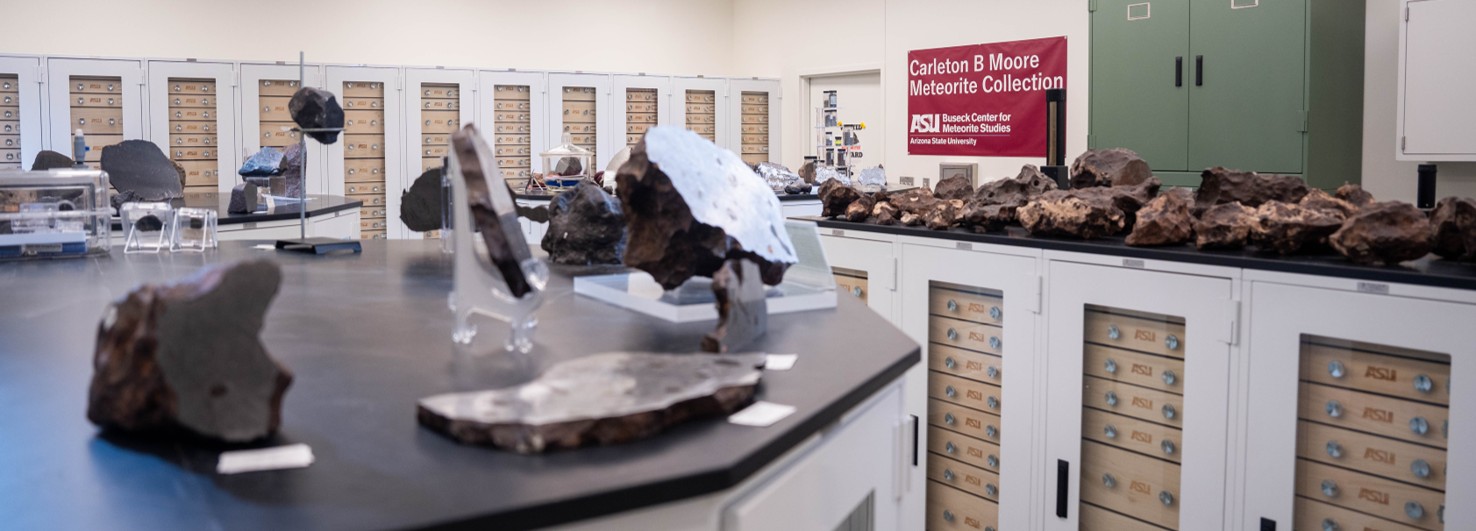
2013 Nininger Meteorite Award Recipients Announced!The ASU Center for Meteorite Studies is pleased to announce that Ingrid Daubar, a graduate student at The University of Arizona, is the recipient of the 2013 Nininger Meteorite Award, and Emily Pringle, a graduate student at Washington University in St. Louis, received an Honorable Mention for the award. The Nininger Meteorite Award recognizes… |
New Meteorite Discovered on Mars!The Curiosity Mars Rover has identified a new iron meteorite on the surface of Mars! The meteorite, named Lebanon, measures approximately 2 meters (6.5 feet) wide, and was identified using high-resolution images generated by Curiosity’s onboard ChemCam, RMI, and MastCam instruments. Learn more about the find here! Image Credit: NASA/JPL-Caltech/LANL/CNES/IRAP/LPGNantes/CNRS/IAS/MSSS |
Fossil Meteorites and Cosmic CollisionsFor decades, meteorite researchers have pondered the circumstances resulting in the many ordinary L chondrites found on Earth – almost 25% of all meteorites recovered. While it's been known for some time that the L chondrite parent body broke up approximately 470 Ma ago, likely due to impact with another large object, new research on… |
Personnel Changes in the Center!The Center for Meteorite Studies welcomes Dr. Kate Souders, who began her appointment as Research Assistant Professor (Laboratory Manager) on July 1, 2014. Dr. Souders received a B.S. in Geology (2000) from Clemson University, followed by M.S. in Geology (2004) from the University of Wyoming and a Ph.D. in Geochemistry (2011) from Memorial University… |